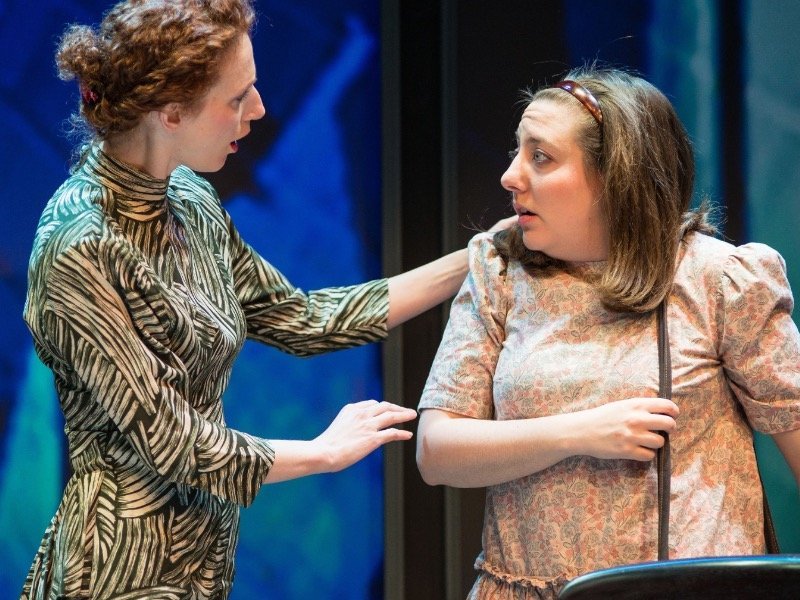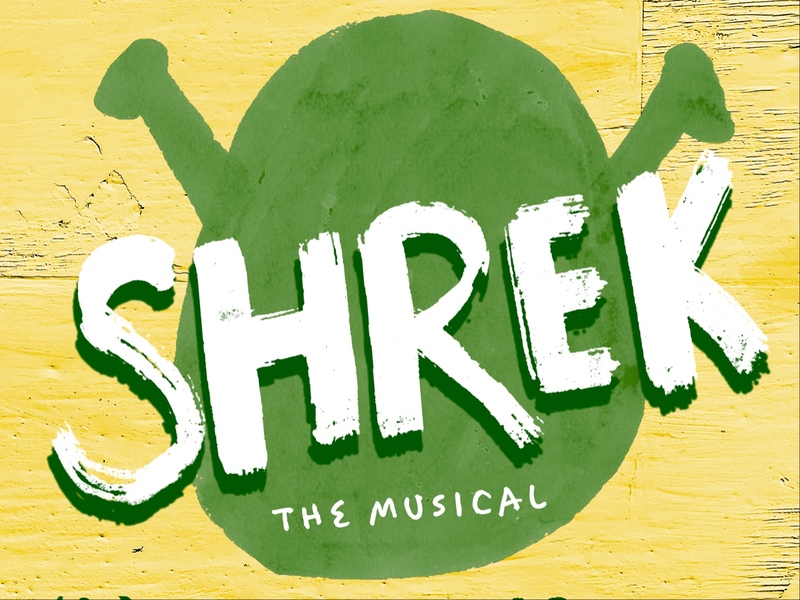Yes, it’s that exciting time of year when theater companies around the state unveil their plans for next year, and as audience members, our imaginations run wild. Obviously, there are a lot of ways to evaluate proposed seasons and dozens of questions to ask. Which future performances will move us? Surprise us? Entertain us? Which actors will inhabit the role of a lifetime? Which unknown gem of a title will steal our hearts? And when will the shows we hear about on the Tony Awards make their way to stages in our neighborhoods?
Other things worth looking at: How much original work does a theater commission? How culturally diverse is each theater’s lineup? How do their seasons tell a larger story? And who gets to tell that story?
Historically, for as long as there have been live performances, theater has been dominated by male playwrights. It’s time for that to change. Why is this important? As playwright Rebecca Gilman wrote in a recent article in the Chicago Tribune, "Because playwrights, directors, designers and actors shape the stories we tell in the theater and the stories we tell become the world we live in. If the stories of one group are hierarchized above those of another, that signals to the world that the rest of us are not nearly as important ... At a time when women are finally speaking out about systemic harassment, violence and silencing, the hierarchizing of men’s stories over ours can be downright dangerous."
Below I’ve crunched the numbers for the 2019-20 seasons of some of the most prominent professional non-profit theaters in southern Wisconsin, regarding the efforts each company has made towards achieving gender parity in the plays they produce.
American Players Theater
- Number of productions: 9
- Number of productions written by women: 1
- Gender parity percent score: 11%
- Percentage of women in positions of power within the organization (Artistic Director, Executive Director and Board President): 66%
- Plays by women: "The Book of Will" by Lauren Gunderson
Children’s Theater of Madison
- Number of productions: 5
- Number of productions written by women: 2.5
- Gender parity percent score: 50%
- Percentage of women in positions of power within the organization (Artistic Director, Executive Director and Board President): 66%
- Plays by women, adapted from source material by women: "Mockingbird" by Julie Jensen, adapted from the book by Kathryn Erskine
- Plays by women, adapted from source material by men: "A Christmas Carol" by Charles Dickens, adapted by Colleen Madden
- Lyrics provided by women for an adaptation of a play by a man: "Peter Pan" by J.M. Barrie, with lyrics by Carole Leigh
First Stage Milwaukee
- Number of productions: 5
- Number of productions written by women: 0
- Gender parity percent score: 0%
- Percentage of women in positions of power within the organization (Artistic Director, Managing Director and Board President): 33%
- Plays by men, adapted from source material by women: "A Wrinkle in Time," adapted by John Glore, based on the book by Madeleine L’Engle; "On the Wings of Mariposa," adapted by Alvaro Saar Rios, based on the book "Ghost Wings" by Barbara M. Joosse
Forward Theater
- Number of productions: 4
- Number of plays written by women: 2
- Gender parity percent score: 50%
- Percentage of women in positions of power within the organization (Artistic Director, Managing Director and Board President): 66%
- Plays by women: "Mary Jane" by Amy Herzog; "For Peter Pan on her 70th Birthday" by Sarah Ruhl
Milwaukee Chamber Theatre
- Number of productions: 5
- Number of plays written by women: 3
- Gender parity percent score: 60%
- Percentage of women in positions of power within the organization (Artistic Director, Managing Director and Board President): 33%
- Plays by women: "Fires in the Mirror: Crown Heights, Brooklyn and Other Identities" by Anna Deavere Smith; "Jeeves at Sea" by Margaret Raether; "No Wake" by Erica Berman
The Milwaukee Rep
- Number of productions: 13
- Number of plays written by women: 3.5
- Gender parity percent score: 27%
- Percentage of women in positions of power within the organization (Artistic Director, Managing Director and Board President): 0%
- Plays by Women: "Eclipsed" by Danai Gurira; "The Niceties" by Eleanor Burgess; "Destiny of Desire" by Karen Zacarias; "Antonio’s Song: Dreaming of a Son" by Dael Orlandersmith and Antonio Edwards Suarez
Next Act Theater
- Number of productions: 4
- Number of productions written by women: 1
- Gender parity percent score: 25%
- Percentage of women in positions of power within the organization (Artistic Director and Board President): 50%
- Plays by Women: "The Revolutionists" by Lauren Gunderson
Renaissance Theaterworks
- Number of productions: 3
- Number of plays written by women: 2
- Gender parity percent score: 66%
- Percentage of women in positions of power within the organization (Artistic Director, Managing Director and Board President): 100%
- Plays by women: "The Roommate" by Jen Silverman; "Actually" by Anna Ziegler
Skylight Music Theatre
- Number of productions: 7
- Number of productions written by women: .5
- Gender parity percent score: 7%
- Percentage of women in positions of power within the organization (Artistic Director, Executive Director and Board President): 33%
- Works in collaboration with women: "The 25th Annual Putnam County Spelling Bee," music and lyrics by William Finn, book by Rachel Sheinkin
So, where are the women?
According to The Broadway League, they are in the audience. In the 2017-18 Broadway season, 66% of the audience was female, along with 72% of touring Broadway shows. So statistically, women are supporting live theater performances, but they are not necessarily being supported in creating them.
In 2016, the Wellesley Centers for Women partnered with American Conservatory Theater to study gender equity in leadership opportunities in hundreds of nonprofit American theater companies. Their findings concluded that women have never held more than 27% of leadership positions.
The League of Professional Theatre Women (LPTW) released a similar study assessing female representation in regional theater. The report, "Women Count: Women Hired Off-Broadway," was based on nearly 700 productions from 2010 to 2017. It found that women were underrepresented in all areas, except for costume design and stage management.
A few years ago, a catchy initiative was launched called 50/50 by 20/20. The LPTW co-sponsored this call to action along with The Women’s Project and New Perspectives Theatre. Their goal was to work proactively for parity for professional women playwrights, directors and designers. And how is that going, you ask, as 2020 draws near?
50/50 is still a long ways off
According to a survey by American Theatre magazine, just 21% of plays presented by regional theater companies in the 2015-16 season had female authors. In the magazine’s 2017 survey, they reported that the number had increased to 26%. The most recent article said, "Plays authored by men constituted 57 percent of all productions, down from 62 percent last year, and plays by women comprise 30 percent, up from last year’s 26 (plays co-written by men and women take up the slack, this year comprising 13 percent)."
Similarly, LPTW’s report on Off Broadway productions stated that the ratio of female-to-male playwrights ranged from the season low of 28 percent in 2013-14 to a season high of 41 percent in 2017-18. Other key positions backstage are also male dominated.
-
Female director credits by season range from a low of 37 percent in 2013-14 to a high of 47 percent in 2017-18.
-
Set designer credits are generally less than one third women, ranging from a season low of 20 percent in 2015-16 to a season high of 32 percent in 2016-17.
-
Lighting designers are overwhelmingly men among recent productions, with a season low of 11 percent credits for women in 2014-15 to a season high of 23 percent credits for women in 2017-18.
-
Sound designer credits are one-fifth women across the seasons, with wide variation among producing companies. Season range from 13 percent women in 2016-17 to a season high of 21 percent women in 2017-18.
And how did we do?
The works written by women account for just 28% of the plays we’ll see on Wisconsin stages next season. So, while female playwrights as a whole are seeing small but steady progress, we still lag behind the national average.
This is something that theaters’ artistic leadership, boards of directors and members of play-reading committees need to be conscious of as they are selecting seasons in the future. It’s also something that audiences and funders should consider when they are choosing where to spend their performing arts dollars.
There is no shortage of women playwrights writing exceptional plays. In fact, since 2010, five women have won the Pulitzer Prize in Drama and nine more have been finalists. Between the Kilroys, a group of theater-makers who annually publish a list of underproduced plays by women, trans and non-binary playwrights, and the New Play Exchange, the world’s largest digital library of scripts by living writers, it’s not true that great plays by women are hard to find. Unfortunately, it is true that it’s hard to find them onstage here.







